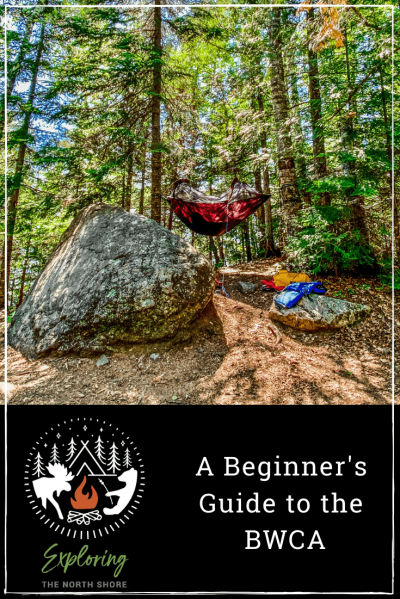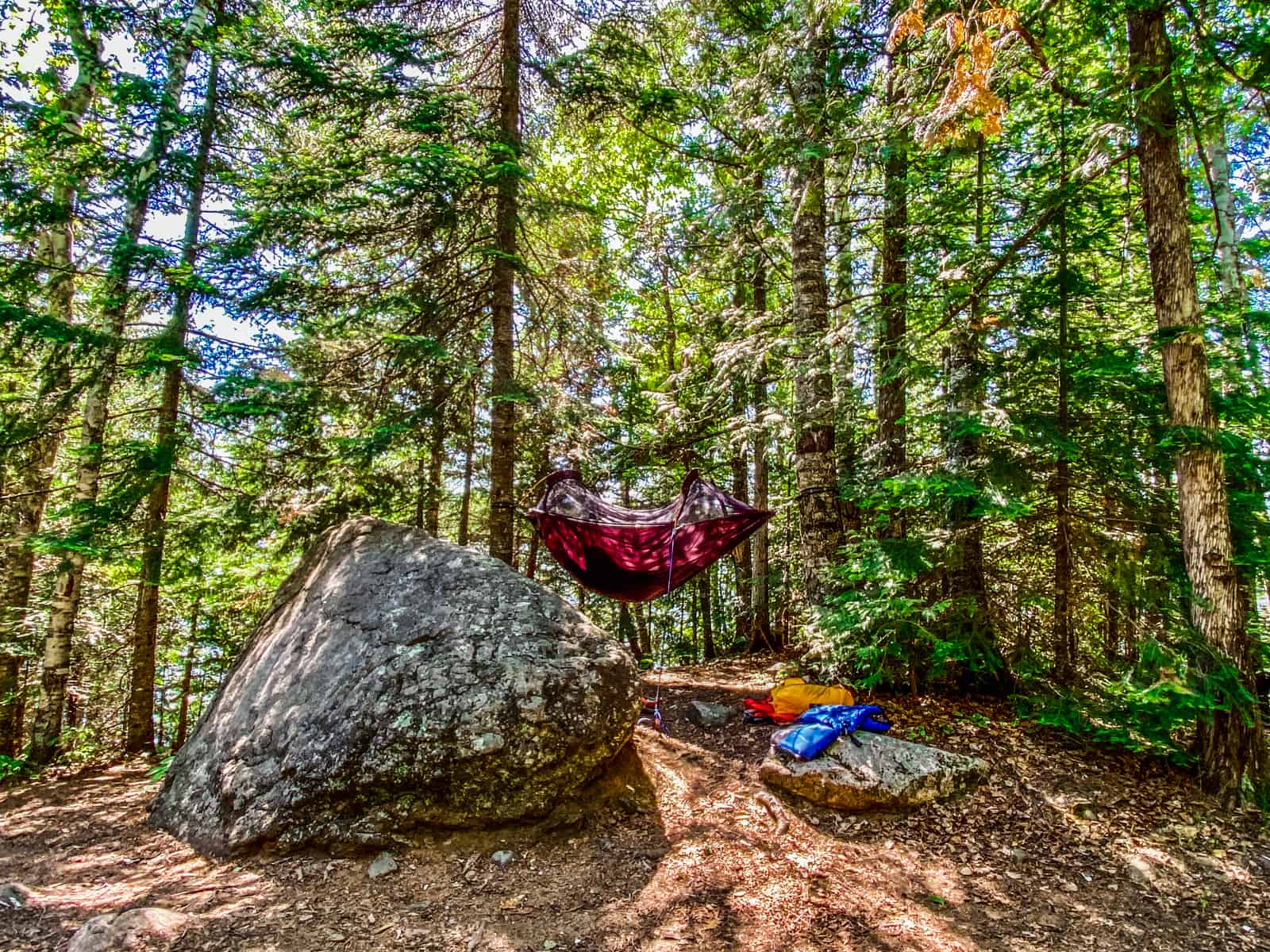A Beginner's Guide to the BWCA
Heading into the Boundary Waters Canoe Area Wilderness (BWCA) can be intimidating, especially if you’ve never been there before. Many experienced visitors to the BWCA plan epic, weeks long trips involving many portages and several lakes, catching fish for food, and embracing the full disconnect from society. Hearing of their travels, many wonder if a trip into the BWCA is something they can do without hiring a guide or delving into a world way outside of their comfort zone. I’m here to tell you that the BWCA can be accessible for first time visitors who want to dip a toe into the BWCA without having to dedicate themselves to a long trek into this beautiful wilderness area. In this, A Beginner’s Guide to the BWCA, we will offer helpful tips and tricks to getting you and your family into the BWCA so you can experience it. Maybe after your first trip in you will realize that the BWCA is not that intimidating and can do a longer trip in the future.
This guide will pertain to overnight, summertime use of the BWCA and assumes you are paddling into the BWCA sometime between May 1st through September 30th. This is the “quota season” for the BWCA when permits are required. For now, we will also only cover the Gunflint Trail and Sawbill Trail areas. Someday we hope to travel over to Ely to become more familiar with that part of the BWCA.
Feel you already know enough about the BWCA and planning a trip? Skip down to the second part of this guide to see our suggested routes and outfitters.
For day use, check out our article on taking a Day Trip to Rose Lake. For wintertime use, check out episode 19 of the podcast when we go ice fishing in the BWCA.
Common Terminology
As you start planning your BWCA trip, you’ll come across some terms that may be confusing at first. Here’s a basic list of these common words and terms you will come across in this guide.
BWCA or BWCAW: Boundary Waters Canoe Area Wilderness
Quetico: A separate wilderness provincial park located north/northwest of the BWCA in Canada- many BWCA travelers also travel into Quetico during their trips.
Outfitters: A business that supplies those traveling into the BWCA with gear rentals, food plans, boats, PDFs, etc.
Entry Points (EP): Permitted areas where you can enter the BWCA. EPs are numbered (EP 1, EP 2, etc.).
Portage: The act of carrying a boat between two waterways. In this case, usually a trail on land that connects one lake to another lake.
Rods: The distance used to measure a portage. 1 Rod = 16.5 feet, 5.5 yards, or 5 meters.
What is the BWCA
The BWCA is is 1-million-acre wilderness area that is found within the Superior National Forest in northeastern Minnesota. As a designated wilderness area, the BWCA is void of motorized vehicles (except in the event of an emergency) and modern comforts like electricity and plumbing since the Boundary Waters Canoe Area Wilderness Act was passed in 1978. No one can live in the BWCA, and entry to the area requires a permit for both day use and overnight use.
The most common way to get around the BWCA is by non-motorized boat like a canoe or a kayak. Hence the “C” in BWCA. There are also areas that are accessible by hiking, but most visitors plan to get around via boat. You can visit the BWCA year round, but the area receives the most visitors in the summer months. Because of it’s designation as a wilderness area, low-impact (leave no trace) visiting is required. In fact, visitors to the BWCA are asked to watch a series of videos on how to visit and enjoy the BWCA without leaving any trace of their visit.
The BWCA can be accessed from several places around Northern Minnesota. Entry Points (EP), which are numbered and marked on overnight entry permits, can be found in Cook, Lake, and Saint Louis Counties, with the most popular entry points located near Ely and on the Gunflint Trail in Grand Marais.
In a nutshell, the BWCA is a large wilderness area full of lakes, rivers, streams, wild animals, plants, trees, and some people in canoes. It’s a great destination for those wanting to reconnect with nature and get away from modern conveniences. There are many ways that one can enjoy the BWCA, and in our Beginner’s Guide we will offer some suggestions for how you can experience it for the first time, based on personal experience.
Work with an Outfitter
It’s normal to be a little nervous about taking a trip into the BWCA. There are a lot of rules and regulations involved, and even an experienced camper may not be aware of all of the gear you may need. Luckily, a large part of the area’s economy is centered around preparing for BWCA trips. These businesses are called “Outfitters” and there are a few dozen of them located all along the BWCA border from Grand Marais to Ely.
All outfitters offer package deals that will supply you with almost everything you need for your trip. This may include tents, sleeping bags, packs, canoes, food, cooking gear, and more. The easiest way to experience the BWCA is to get a complete package from an outfitter. Then, all you need to bring is your clothing, personal care items, water bottles, etc. Take the guesswork out of what you will need and let the experts set you up. They can even help you reserve your permit. Package deals vary in price based on outfitters, but you can expect to spend $85-150 per person per day. Prices vary based on the outfitter you choose, length of stay, and package selected. Refer to your chosen outfitter for exact pricing.
If you’re an avid camper and already have a lot of the gear that an outfitter will provide, you can do an a la carte package and only rent or purchase the items you will need that you do not currently own. This can cut down on the cost dramatically.
There’s another perk to using an outfitter, besides getting the gear you need. A good outfitter will also help you select the best route for your group, help you identify camping areas, and give you suggestions on how to handle portages. Basically, they can act as a personal trip planner and give expert advice. You can also purchase your permit through the outfitter. These are usually small businesses with owners and employees who really care about the BWCA and creating the best experience for all visitors. They may also be the first to realize if something has gone wrong with your journey if you do not show up on your scheduled return day. Many expert BWCA travelers opt to use an outfitter for basic needs, like a canoe rental, just so they have that assurance that someone will notice pretty quickly if they do not return on time.
Finally, one more perk to using an outfitter, is that many offer cabins or have nearby campsites for rent where you can stay before and after your BWCA journey. Not all outfitters offer this, but most do and it’s a great way to start and end your BWCA trip.
So we recommend working with an outfitter, even if it’s just for a few items you need, help planning your trip, or a place to stay before and after.
Do It Yourself | Reserving Your Own Permit
Even though we recommend going through an outfitter, it is possible to venture into the BWCA without the assistance of an outfitter. If you have all the gear you think you’ll need, have a boat, and have researched your route well, you can definitely go into the BWCA on your own. You will need to secure a permit via Recreation.gov and learn where you need to go to obtain your permit. They can usually be collected at a ranger’s station or outfitter. Note that due to the COVID-19 Pandemic, visitors coming in 2020 are allowed to print their permits out and do not need to stop anywhere to pick it up.
An overnight permit has a fee attached and it’s recommended you book your permit far in advance. The number of overnight permits issued for each EP is limited. For instance, as I am writing this in June 2020, Overnight Paddle Permits at EP 38: Sawbill Lake is limited to 14 permits per day. Looking at available permits over the next ten days, only one permit is available and it’s on a Tuesday. EP limits range from 1 to 27 permits per day, with most having under 5 permits per day. If you have a specific EP you want to enter on a specific day and the permits are sold out you cannot enter the BWCA from that EP on that day. So, plan early. If you find yourself planning a last-minute trip, go to Recreation.gov and see what permits are available and where and plan your trip based on that.
You need to provide a lot of information when you book your permit. Not only do you need to know where and when you plan to enter the BWCA, but also how long you plan to stay in, how many people will be in your group, and how many boats your group will have. There is a limit of nine people and four watercraft per group. You cannot exceed this limit any time or anywhere in the BWCA, including at campsites and portages. This is why it’s important to plan ahead and be prepared if you are going into the BWCA without the assistance of an outfitter.
Note that you can also book your own permit even if you are working with an outfitter. Just make sure you are purchasing the correct permit for the correct EP.
Do It Yourself | Plan Ahead “Be Like Barb”
If you are doing everything on your own- plan ahead! Your actual journey will likely vary a bit from you planned route, ours certainly did. But, having an idea of the route you want to take and the length of time it will take to complete that route is essential. Remember that your permit only covers you for a certain length of time. You need to be sure you can enter and exit the BWCA on the permitted days (leaving early is permitted).
There are many great resources for finding the best route for your paddling level and length of trip. BWCA.com is probably the best, most informative planning tool on the internet today. Although note that old information is not cleared off of the website so you may be reading route plans and reviews that are a decade old. Even with low-impact travel within the BWCA, things change often. Sometimes campsites and portages are closed and areas are no longer accessible. Specific events may also affect where you can go and when. For instance, they can close a series of campsites if enough campers report encountering a bear. During the COVID-19 pandemic, some areas that bring paddlers into Canadian waters were closed since the border closure happened. So do your research to ensure the route you want to take is available for your trip.
Then do your research on what to bring with you. Even an avid camper may not have everything they need in order to take a trip into the BWCA. There is no access to drinkable water within the BWCA, so you will need to find a way to filter water, either through iodine tablets or a water filtration system. You will want to prepare to hang your food bag at night to avoid attracting bears to your campsite. And, you will want to make sure you have the appropriate items in a first aid kit in case of emergency. A good way to know what you’ll need to pack for your trip is to check out what’s included in an outfitter’s package. Like this list from Sawbill Canoe Outfitters.
Just plan to plan and plan a lot. You should not “wing it” on a BWCA trip. That being said, you also want to remain flexible with your time. Give yourself more time you need in case you encounter inclement weather, heavy winds, forest fires, wild animal encounters, or busy portages.
Picking an EP | Outfitter and Resort Entry Points
When choosing your EP for your first BWCA trip, we recommend choosing an EP near an outfitter or resort. Even if you don’t plan to use that outfitter. These EP’s usually experience heavier travel and gives you the most opportunity for getting help, if needed. Entering in an isolated EP may sound like a great way to do a BWCA trip, and probably is, but for your first trip in we’d recommend not going too far off the beaten path.
Here is a list of our preferred beginner EPs located near an outfitter in Cook County. Scroll down to the second part of this guide for details on each EP.
- EP 38 | Sawbill Lake | Sawbill Canoe Outfitters
- EP 64 | East Bearskin Lake | Bearskin Wilderness Outfitters
- EP 60 | Duncan Lake | Hungry Jack Lodge and Hungry Jack Outfitters (both located on Hungry Jack Lake nearby)
- EP 47 | Lizz and Swamp Lakes | Rockwood Outfitters, Blackbear Lodge, Poplar Hus, Trail Center (all located on Poplar Lake)
- EP 57 | Magnetic Lake | Gunflint Outfitters, Gunflint Lodge, Gunflint Pines
- EP 51 | Missing Link Lake | Tuscarora Outfitters (located on Round Lake)
- EP 54/EP 54 A | Seagull Lake and Seagull Lake Only | Seagull Outfitters
- EP 55/EP 55A | Saganaga Lake and Saganaga Lake Only | Voyageur Canoe Outfitters
One Lake & Short Portage Trips
Now that you know how to get into the BWCA, it’s time to figure out where you want to go. If it’s your first trip in, you may want to take it easy and start slow with one-lake or short-portage trips. Of course, you can go all out and do an epic 2-week trip covering many lakes during your travels. If that’s the case, plan ahead and have a great time! But, if you’re looking to just get into the BWCA on a short trip or take it easy on your first time in, we recommend short-portage trips. If you are traveling with very young children or someone with mobility issues, consider a one-lake trip. Many avid-BWCA fans will tell you that you cannot do a trip without experiencing at least one portage, but it is possible, if needed, to stay on one lake your entire journey and still have a lot to see and do.
Lakes worthy of one-lake trips include Sawbill Lake, Seagull Lake, and Saganaga Lake. In fact, as you can see from our list above, Seagull Lake and Saganaga Lake have permits specifically for travelers that do not plan to leave those lakes during their trips, so this is pretty common. If choosing a one-lake trip based on how easy the lake is to navigate, choose Sawbill or Seagull. Saganaga is a massive, deep lake filled with dozens of islands that can be tricky for a beginner to navigate.
When we talk about short portages, we are referring to lakes that are closer together and can be accessed by a portage that is 100-rods or less. 100 yards is the length of five and a half football fields. I also have Extremely-Short-Portage Trips in the list below. Those are routes that have portages all around or under 50-rods. Scroll down to the second part of the Beginner’s Guide to see some suggested routes.
Big Lakes Versus Small Lakes
Another thing to consider when planning your BWCA trip is the type of lake you want to travel on. There are big lakes, medium lakes, and small lakes. Many people, especially beginners, like to travel on smaller lakes. They tend to be affected less my severe weather (waves) and get warmer sooner. Smaller lakes also tend to be better for fishing. But, smaller lakes also have fewer available campsites and require more portages.
On the flip side, traveling on big lakes provides more camping opportunities, which is great for busy weekends where finding a campsite can be a challenge. Big lakes also provide for opportunities to not do any portages at all, as mentioned above.
Of course, there are routes that will bring you to a variety of lakes, both big and small. We think the perfect trip for a beginner is a combination of the two, so you can experience both and decide for future trips where you want to go.
Basecamp Versus Moving Campsites
If you are going into the BWCA on a busy weekend (which is pretty much every weekend in the summer months), you may find that campsites are very limited. On the day we entered Sawbill Lake for our first BWCA trip, we were warned by Dan Shirley, one of the owners of Sawbill Outfitters, that a couple of groups had returned a day earlier the previous evening due to not being able to find a campsite. His suggested was to go in and find a campsite first, and then explore. Luckily, we found a campsite almost right away that was open, so we grabbed it and then stayed there for the rest of our trip. This is called a Basecamp- when you claim a campsite right away and stay there for your entire trip. Then you can explore other areas and lakes during the day, returning to your basecamp at night. This does limit you to how far you can travel each day. And remember, you need to get back to your camp at the end of the day!
Alternatively, you can move to a different campsite each day of your trip or every couple of days. This way you can travel a longer distance. With this style of traveling, you will have to carefully pack up your campsite each time you move. Remember, you are to leave no trace at your campsite! This means taking the time and effort to check your campsite before you leave to ensure you didn’t leave behind any trash, gear, or food. Because packing up a campsite can be time consuming, you may want to use a Basecamp for your first trip in.
2-Night, 3-Night, 4-Night Trips
As a first time traveler into the BWCA, you may want to consider a shorter trip. This way you aren’t spending as much money and time on a trip only to find out it’s not the type of trip for you. Shorter trips also means less gear to carry across portages. All of the trips we have listed below can be done during 2-, 3-, and 4-night trips.
If you want to jump into the BWCA with an epic 2-week long trip, by all means do! We love your enthusiasm. We personally chose to do a 2-night trip to start, with longer trips planned after we get familiar with how a BWCA trip will go and precisely what our paddling skill levels are (spoiler alert… not great!).
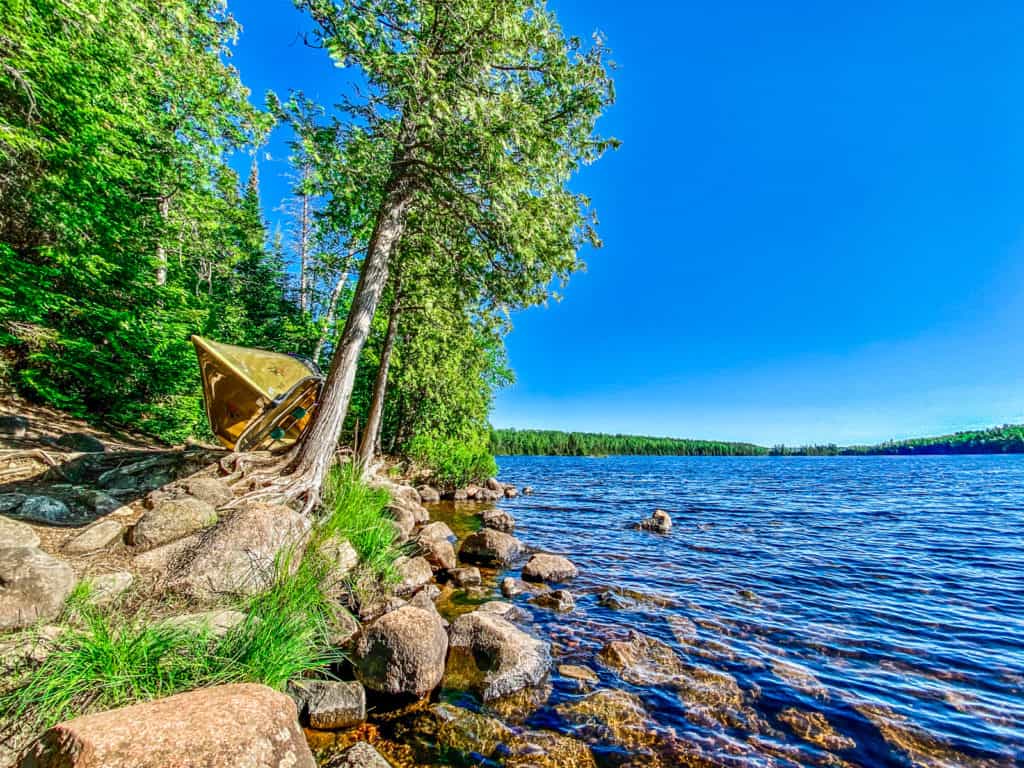
A Beginner’s Guide to the BWCA Routes
Feeling encouraged and ready to trek into the BWCA? Here is a list of our favorite one-lake. short-portage, and extremely-short portage routes with EPs located near a lodge or outfitter. Our guide is only covering Sawbill Trail and Gunflint Trail routes. There are many more that can be accessed via Ely-area entry points. We may include these in the future, but are not familiar enough with them to recommend them.
Getting There
Take turn onto the Sawbill Trail off Highway 61 in the town of Tofte. Continue until it ends. The Sawbill Trail basically ends in the parking lot of Sawbill Canoe Outfitters and the Sawbill Campground.
Outfitter and Pre-Trip Lodging Info
Sawbill Canoe Outfitters has been family owned and operated since 1957. Third-generation owners Clare and Dan Shirley are keeping the family-tradition of helping people enjoy the wilderness. Sawbill is a full service outfitter. They can help you will all of you gear, some of your gear, or just a canoe rental. They do not have an cabin rentals, but the Sawbill Campground is just 100 yards away and a great place to sleep the day before and after your BWCA Trip.
2 to 3 Day One-Lake, No Portage Loop | Sawbill Lake Only | Blue Route on Map
- For those wanting to experience the BWCA without doing any portages.
- Put your boat in at the boat launch near the Sawbill Campground.
- Explore and stay on Sawbill Lake.
- Campsites: 13
- Size: 834 acres with a max depth of 45 feet.
- Paddling a loop around the lake will be a distance of about 2.5 miles.
2 to 4 Day Extremely-Short-Portage Loop: Sawbill to Kelso to Alton | Orange Route on Map
- Cover a greater distance with only three short portages and explore two large lakes and one small lake.
- Put in your boat at the boat launch near the Sawbill Campground.
- Paddle a short way up Sawbill Lake to Kelso River.
- Take the 18.5-rod portage between Sawbill Lake and Kelso River
- Take the Kelso River into Kelso Lake.
- Explore and Stay on Kelso Lake.
- Campsites: 3
- Size: 133 acres with a max depth of 16 feet.
- Paddle down to the southern end of Kelso Lake (do not go back into Kelso River)
- Take the 12.8-rod portage between Kelso Lake and Alton Lake.
- Campsites: 16
- Size: 969 acres with a max depth of 72 feet.
- Midway down Alton Lake, you will find the 28.5-rod portage back to Sawbill Lake.
- Paddling this loop will cover roughly 12 miles of paddling total if you paddle the whole length of Alton and only paddle on Sawbill until Kelso River.
3 to 4 Day Short-Portage Route: Sawbill to Smoke to Burnt to Flame | Green Route on Map
- Cover a greater distance with only three short portages and explore three smaller lakes.
- Put in your boat at the boat launch near the Sawbill Campground.
- Paddle about halfway up Sawbill Lake to the Smoke Lake Portage.
- Take the 107-rod portage between Sawbill Lake and Smoke Lake.
- Explore Smoke Lake
- Campsites: 4
- Size: 158 acres with a max depth of 20 feet.
- Things to Do: Go fishing or explore the small inlet on the north end of the lake.
- Paddle straight across Smoke to the Burnt Lake Portage.
- Take the 95-rod portage between Smoke Lake and Burnt Lake.
- Explore Burnt Lake
- Campsites: 6
- Size: 358 acres with a max depth of 23 feet.
- From the Smoke Lake to Burnt Lake portage go north to the Flame Lake portage.
- Take the 59-rod portage between Burnt Lake and Flame Lake.
- Explore Flame Lake.
- Campsites: 1
- Size: 51 acres with a max depth of 22 feet.
- This is not a loop route. You will need to head back to Sawbill via the Flame Lake, Burnt Lake, and Smoke Lake portages.
- Paddling this route will cover roughly 12 miles of paddling total if you do a loop around all three lakes and only paddle on Sawbill until the Smoke Lake portage.
4 to 6 Day Sawbill Adventure | Sawbill to Alton to Kelso to Sawbill to Smoke to Burnt to Flame | Combine Orange and Green Routes on Map
- Combine the three routes above for a longer trip covering a greater area and six great lakes.
- Refer to the routes above. The only adjustment we’d make would be to enter into Sawbill Lake and immediately take the portage into Alton Lake. Then take the portage into Kelso Lake and back down the Kelso River to Sawbill Lake. Essentially reversing the Sawbill – Kelso – Alton loop. Going back into Sawbill Lake from Kelso River puts you closer to the Smoke Lake portage.
- This route gives you many more campsite opportunities. If you are heading out on a busy weekend, you can look for an available campsite mid-Sawbill Lake and use that as your basecamp, doing the Kelso – Alton loop one day and the Smoke – Burnt – Flame route another while keeping your basecamp on Sawbill.
- Depending on how much you explore, you could paddle 25+ miles over the course of your trip.
Map
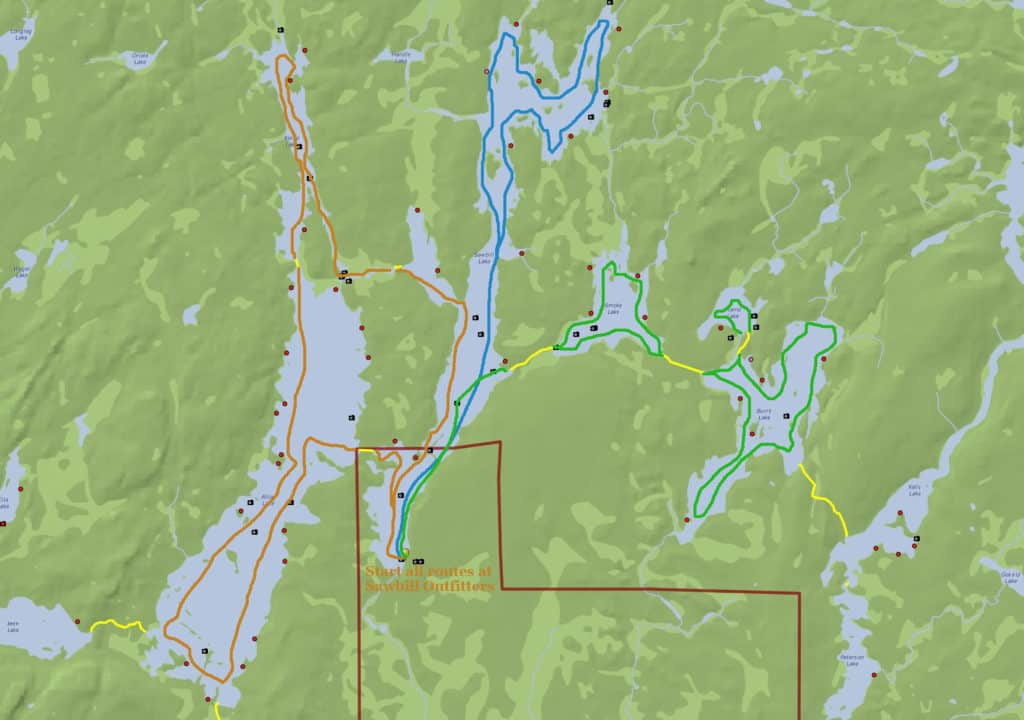
Click here to view full-sized image
Getting There
Head up the Gunflint Trail from Grand Marais for about 27 miles and turn right on E Bearskin Rd. After 0.7 miles on E Bearskin Road turn right onto Forest Rd. 60.
Outfitter and Pre-Trip Lodging Info
Bearskin Wilderness Outfitters offer complete or partial outfitting for canoe trips anywhere along the Gunflint Trail and eastern BWCA area. The outfitters is located within the Bearskin Lodge and Resort, which offers a variety of lodging options you can enjoy before and after your BWCA trip. East Bearskin Lake Campground is also nearby.
2 Day Extremely-Short-Portage Loop: East Bearskin to Alder | Dark Orange Route
- For those with limited time to explore, this loop is quick and easy with the two 50-rod portages.
- Launch into East Bearskin Lake and go to the southwestern Alder Lake portage.
- Take the 52-rod portage between East Bearskin Lake and Alder Lake.
- Explore Alder Lake.
- Campsites: 7
- Size: 528 acres with a max depth of 72 feet.
- Head to the northwest inlet of Alder Lake to the take the second 52-rod portage back to East Bearskin Lake.
- If you only paddle from East Bearskin Lake to Alder Lake, and do not portage to any smaller lakes, you will paddle roughly 12 miles total.
Make this route a longer trip by taking the extremely short portages into smaller, nearby lakes like Pierz Lake, Canoe Lake, Paddle Lake, and Crystal Lake. If you cannot find a campsite on Alder there are some on Pierz Lake and Canoe Lake.
There are also several day-trip options such as East Bearskin Lake to Flour Lake to Aspen Lake. The Aspen Lake to East Bearskin Lake portage actually brings you right to Bearskin Lodge and Resort. There are no campgrounds on these lakes and they are not in the BWCA, so they are a day-trip only.
Map
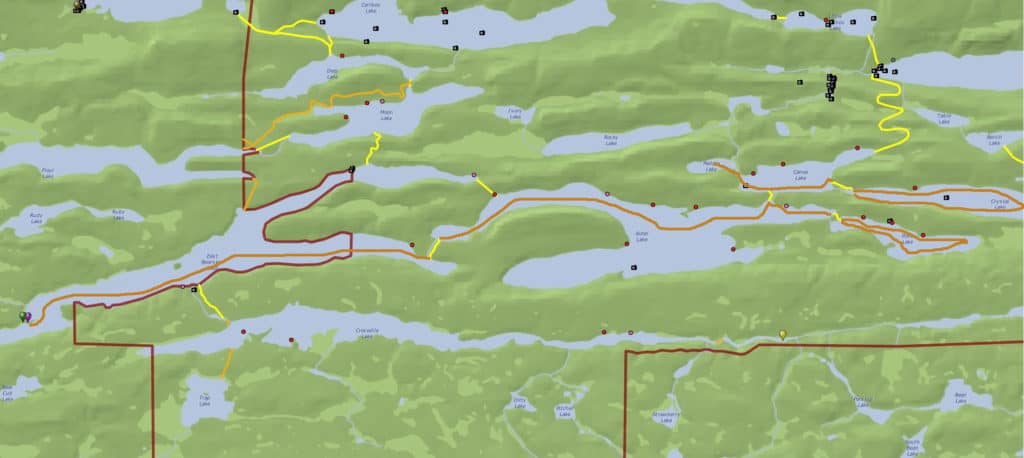
Getting There
Duncan Lake is accessible through Bearskin Lake. We recommend Hungry Jack Outfitters on Hungry Jack Lake to access Duncan Lake. Take the Gunflint Trail to the mid-trail area. Take a right onto Hungry Jack Road and then stay to the right of the fork to go onto S Hungry Jack Road. Stay on S Hungry Jack Road until the road ends at Hungry Jack Canoe Outfitters. This will take you to Hungry Jack Outfitters where you can portage to EP 60 at Duncan Lake.
You can get closer to the EP by taking the left of the fork to stay on Hungry Jack Road. About 0.7 miles down the road you will see a public parking area on the left side of the road. This will give you access to West Bearskin Lake which is a short trip across the lake to EP 60 at Duncan Lake.
Outfitter and Pre-Trip
Hungry Jack Outfitters is a family-owned and operated currently operated by Dave and Nancy Seaton. Dave and Nancy, and their staff, are a wealth of knowledge about the BWCA. They are a full service outfitter and also have two cozy cabins for rent that you can stay in before and/or after your BWCA trip. Or basecamp from a cabin and day trip into the BWCA.
2 to 4 Day Short Portage Route: Duncan to Rose (Optional: Rat Lake)
- Experience the stairway portage and a beautiful waterfall on this popular route.
- Depart from Hungry Jack Outfitters on Hungry Jack Lake.
- Paddle the short way across Hungry Jack Lake.
- Take the 20-rod portage to Bearksin Lake.
- Paddle to short way across Bearskin Lake.
- Take the 81-rod portage to Duncan Lake.
- Explore Duncan Lake:
- Campsites: 7
- Size: 472 acres with a max depth of 130 feet.
- Paddle the long way across Duncan Lake.
- Take the 77-rod portage to Rose Lake. Note: this is the stairway portage.
- Explore Rose Lake (this is a border lake that is half in the US and half in Canada. A passport is needed for traveling on the Canadian side.):
- Campsites: 8 (all on the US side)
- Size: 628 acres with a max depth of 90 feet.
- Optional: Paddle to the far west side of Rose Lake.
- Take the extremely short 8-rod portage to Rat Lake.
- Explore Rat Lake:
- Campsites: 0
- Size: 15.9 acres with a max depth of 5 feet.
- This is not a loop route. You will need to head back to Rose, Duncan, Bearskin, and Hungry Jack Lakes via the portages to return to the outfitters.
- Paddling this route will cover roughly 18 miles of paddling total if you explore all of Duncan Lake, Rose Lake on the US side, and Rat Lake.
Map
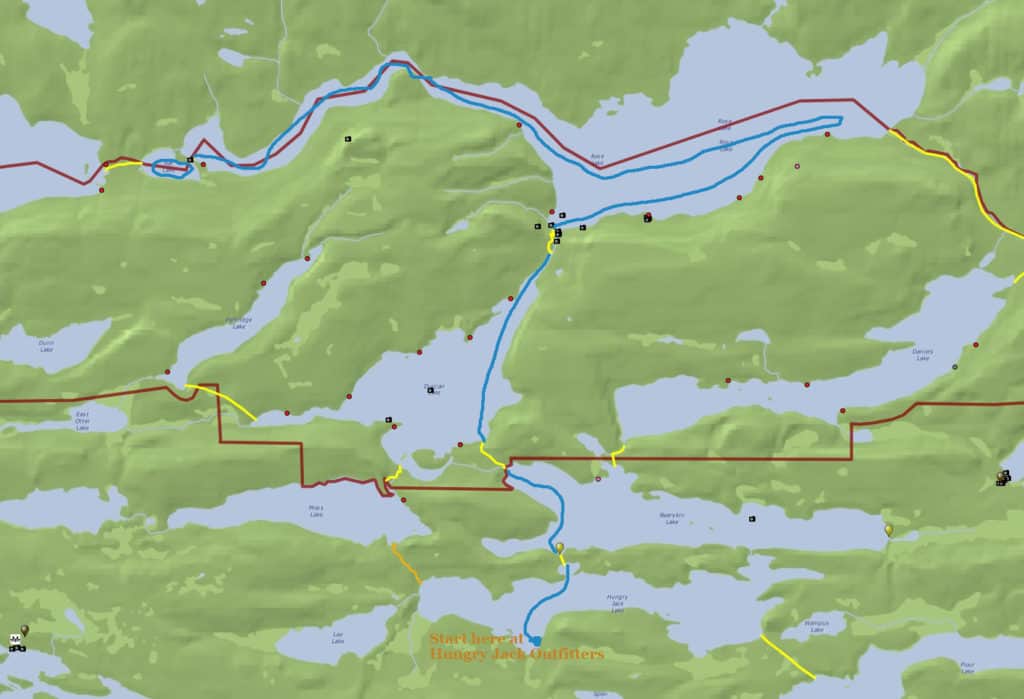
Getting There
Like Duncan Lake, Lizz Lake is easier to access via another lake that is not in the BWCA: Poplar Lake. We recommend using Rockwood Lodge & Outfitters on Poplar Lake for EP 47 trips. To get to Rockwood Take the Gunflint Trail to the mid-trail area. Turn left onto Rockwood Road.
Outfitter and Pre-Trip Lodging Info
Rockwood Canoe Outfitters is another family-owned and operated, full-service outfitter. Rockwood is owned by two brothers and their wives who purchased Rockwood in 2015 after having worked at Rockwood several years prior. In addition to providing outfitting services, Rockwood also offers 8 cabins and a bunkhouse for lodging. You can stay at Rockwood before and after your BWCA adventure, or use Rockwood as a basecamp if you don’t want to camp in the BWCA.
2 to 4 Day Short Portage Route: Lizz to Caribou to Horseshoe | Blue Route on Map
- This simple introduction to the southern mid-trail area is great for those just starting out.
- Put in your boat Rockwood Outfitters (alternatively, there is a public launch on Poplar Lake that you can use).
- Paddle across Poplar Lake to EP 47.
- Take the 46-rod portage to Lizz Lake.
- Paddle across Lizz Lake.
- Take the 68-rod portage to Caribou Lake.
- Explore Caribou Lake:
- Campsites: 8
- Size: 270.5 acres with a max depth of 26 feet.
- Paddle to the southeast corner of Caribou Lake and take the 22-rod portage to Horseshoe Lake.
- Explore Horseshoe Lake:
- Campsites: 7
- Size: 210 acres with a max depth of 26 feet.
- This is not a loop route. You will need to double back to Caribou and Lizz Lake to return to Poplar Lake.
- Paddling this route, if you explore all of Caribou and Horseshoe Lakes will cover roughly 12 miles total.
5 to 7 Day Loop: Lizz to Caribou to Horseshoe to Gaskin to Henson to Pillsbery to Swallow to Meeds (loop back to Caribou) | Orange Route on Map
- This route has one longer portage (105 rods).
- Start by following the route above (Lizz to Caribou to Horseshoe).
- Paddle to the southwest corner of Horseshoe Lake.
- Take the 98-rod portage to Gaskin Lake.
- Paddle across Gaskin the far west side.
- Explore Gaskin Lake:
- Campsites: 10
- Size: 427 acres with a max depth of 82 feet
- Take the 91-rod portage to Henson Lake.
- Explore Henson Lake:
- Campsites: 5
- Size: 139 acres with a max depth of 40 feet
- Paddle the short way across Henson Lake.
- Take the 51-rod portage to Pillsbery Lake.
- Explore Pillsbery Lake:
- Campsites: 2
- Size: 75.5 acres with the max depth unknown.
- Paddle across Pillsbery to the north-central side.
- Take the 89-rod portage to Swallow Lake.
- Explore Swallow Lake:
- Campsites: 0
- Size: 37 acres with a max depth unknown
- Paddle the short way across Swallow Lake.
- Take the 105-rod portage to Meeds Lake.
- Explore Meeds Lake:
- Campsites: 3
- Size: 370 acres with a max depth of 41 feet
- Paddle the long way across Meeds Lake to the eastern side.
- Take 26-rod portage to the into a creek and the 13-rod portage out of the creek to Caribou Lake.
- Paddle across Caribou Lake to the northeast corner to get back to the Lizz Lake Portage.
- This “epic” trip covers 9 lakes and a small creek. You will need to take 11 shorter portages and one longer portage, so only take this route if you enjoy portaging a lot. Be sure to give yourself plenty of time to travel. 5 days is the minimum a beginner will likely be able to do this route, and that’s if you do not take time to explore and just do the route. A week would be best. You will cover about 16 miles on this journey total round trip.
Map
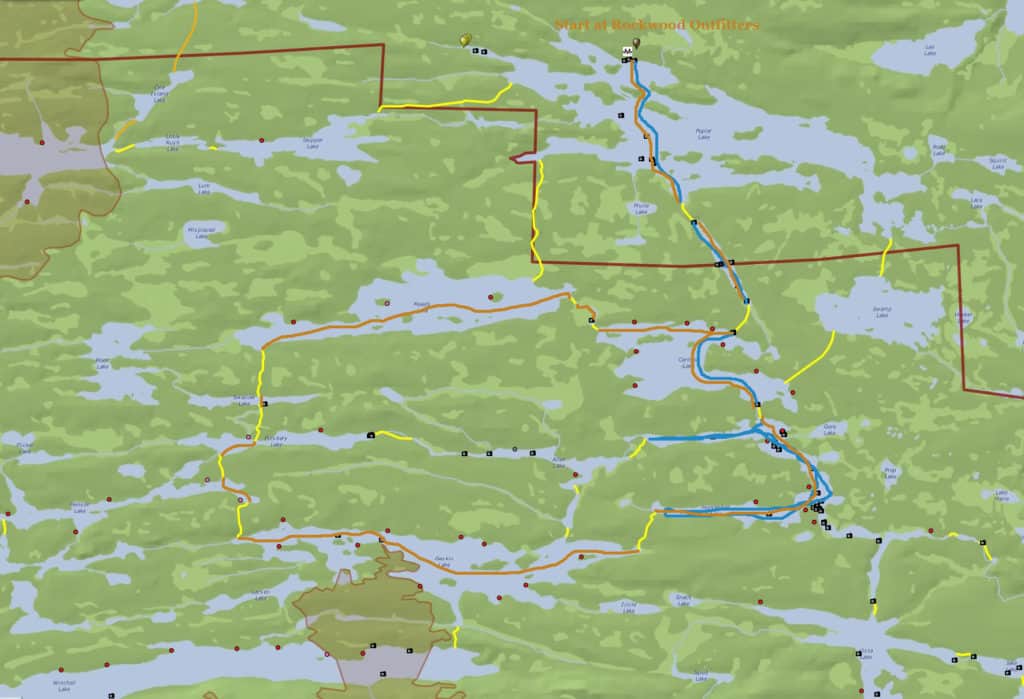
Getting There
Even though the EP 51 is called Missing Link Lake, you actually enter into Round Lake. From the Gunflint Trail turn left onto Round Lake Road. Continue on Round Lake Road for less than a mile. Round Lake Road dead-ends at Tuscarora Lodge & Canoe Outfitters.
Outfitter and Pre-Trip Lodging Info
Tuscarora Lodge & Canoe Outfitters is owned by Andy McDonnell and Ada Igoe. Both were born and raised in the Grand Marais area and know the BWCA well. Tuscarora is a full-service outfitter, including having several cabins and lodge rooms for before and after your stay. In addition to being a great outfitter for overnight BWCA trips, Tuscarora would also make a great basecamp for those wanting to just take day trips.
3 to 4 Day Small Lake Route: Round Lake to Gillis Lake | Red Route on Map
- This route has many portages which can be very challenging. Some portages like to flood in the spring. Others include steep inclines. You will also have only 6 campsites you will come across until you reach Gillis Lake! It’s a great route if you want more of a challenge for your first trip.
- Enter Round Lake at EP 51 Missing Link Lake.
- Paddle across Round Lake to the West Round Lake Portage.
- Take the 77-rod portage to West Round Lake.
- Paddle across West Round Lake.
- Take the 46-rod portage to Edith Lake.
- Paddle across Edith Lake.
- Take the 33-rod portage to Brandt Lake (at this point you are in the BWCA).
- Explore Brandt Lake:
- Campsites: 3 (all along the north side and the only campsites on this route!)
- Size: 115 Acres with a max depth of 80 feet
- Paddle to the northwest corner of Brandt Lake and take the 88-rod portage to Gotter Lake.
- Paddle to the northwest corner of Gotter Lake and take the 13-rod portage to Flying Lake.
- Paddle about 1/4 of the way up Flying Lake and you will see the portage to Green Lake on the left-hand side of the lake.
- Take the 73-rod portage to Green Lake.
- Paddle straight across Green Lake to the far side.
- Take the 18-rod portage to Bat Lake.
- Explore Bat Lake:
- Campsites: 3
- Size: 83 acres with a max depth of 110 feet.
- Paddle to the southeast corner of Bat Lake and take the 21-rod portage to Gillis Lake.
- Gillis Lake is the largest lake you will encounter on this trip! Explore Gillis Lake
- Campsites: 7
- Size: 616 acres with a max depth of 180 feet.\
- This is not a loop route. You will need to double back the way you came. (There is a loop if you go from Gillis to Crooked Lake to Owl Lake to Tuscarora to Missing Link Lake back to Round Lake. However, the portage between Tuscarora and Missing Link Lake is over a mile long and very challenging. We do not recommend for your first trip.)
- Paddling this route, if you explore all of Gillis Lake, is about 13.5 miles.
2 to 3 Day Small Lake Route: Stop at Brandt Lake
- Follow the above route, but stop at Brandt Lake. If you can find on of the 3 campsites open, snag it up and use this lake as a basecamp to explore the small lakes nearby. The portages will be less difficult if you do not have all your gear. We put this route second as getting a campsite on Brandt may be difficult. Do not plan to take this route but rather adjust your plans if you can do it.
Map
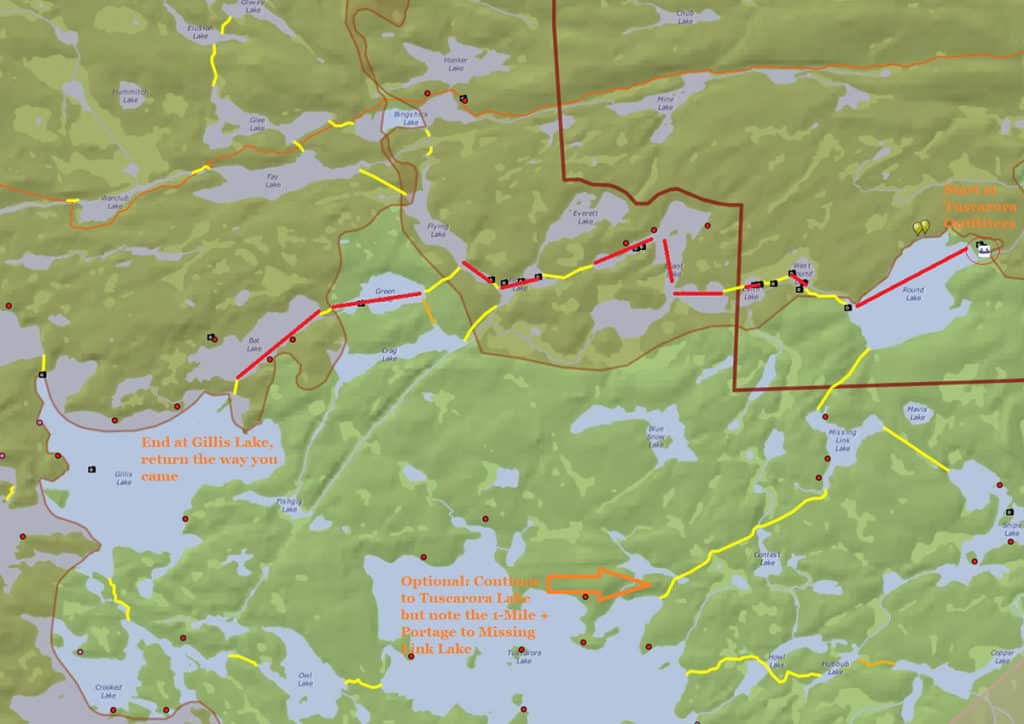

Our Trip Into the BWCA on Exploring the North Shore
You’ve read the guide, now hear all about the trip that (mostly) wrote it! The first time we ventured into the BWCA. This trip marked Martha’s first time going into the BWCA ever! Jaye had ventured into the BWCA on day trips multiple times for the podcast and personal trips. And, one over-night trip as a child under her belt. But, for the most part, both of us were very much beginner travelers into the BWCA.
We went did an outfitting package through Sawbill Canoe Outfitters and set out at EP 38: Sawbill Lake for our trip. We planned to do an extremely-small portage, 2-night trip that turned into a one-lake trip due to inclement weather and Martha having a migraine on the first day. From this trip we learned some valuable lessons and are planning a longer trip later in the summer.
Our BWCA trip occurred in June of 2020. During this time the COVID-19 Pandemic was affecting many things related to travel within the BWCA. It was also just a couple of weeks after the George Floyd murder in Minneapolis that sparked worldwide Black Lives Matter protests. We discuss these two events and how they affected our trip. Note that when you make your first trip into the BWCA may mean some processes and experiences will be different than ours.
Watch Our BWCA Video (During Covid)
BWCA Gallery
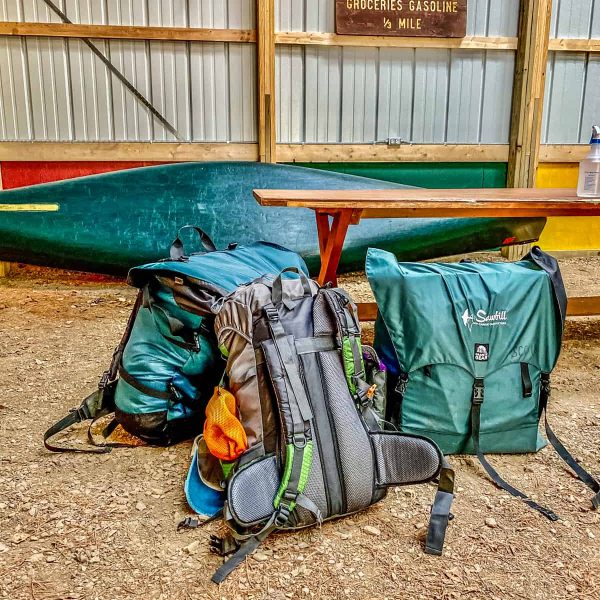
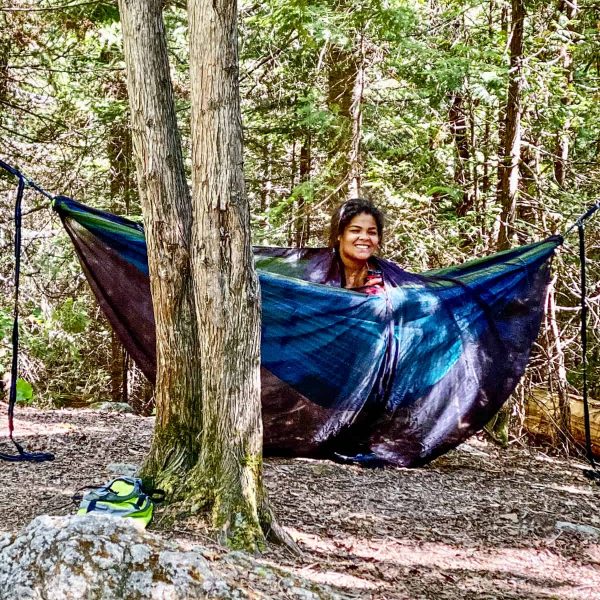
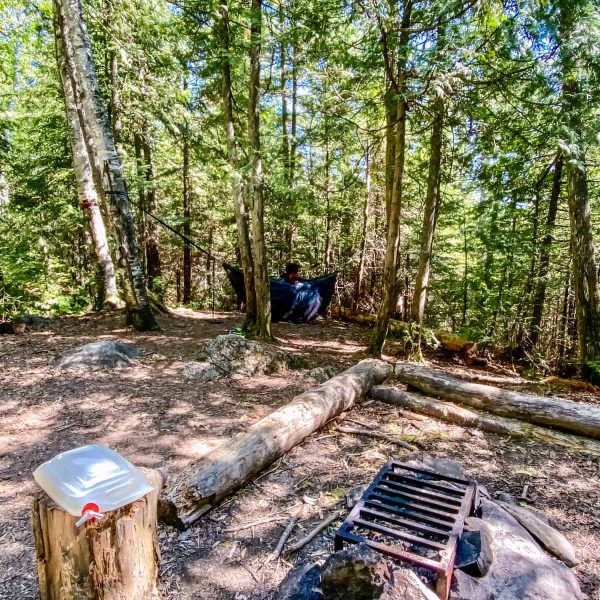
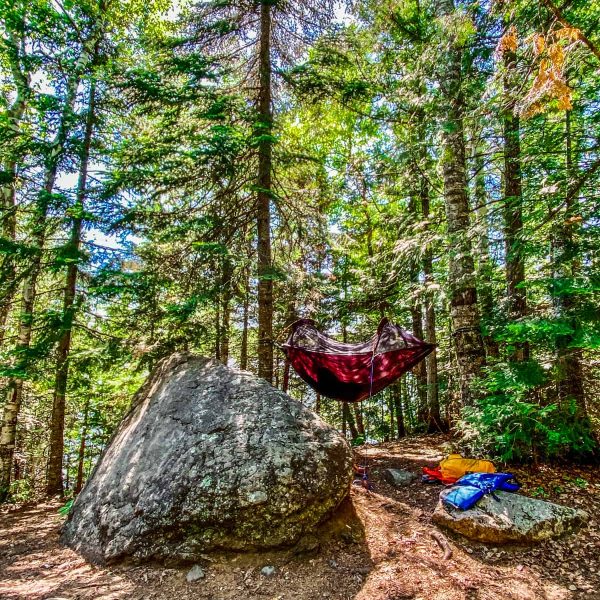
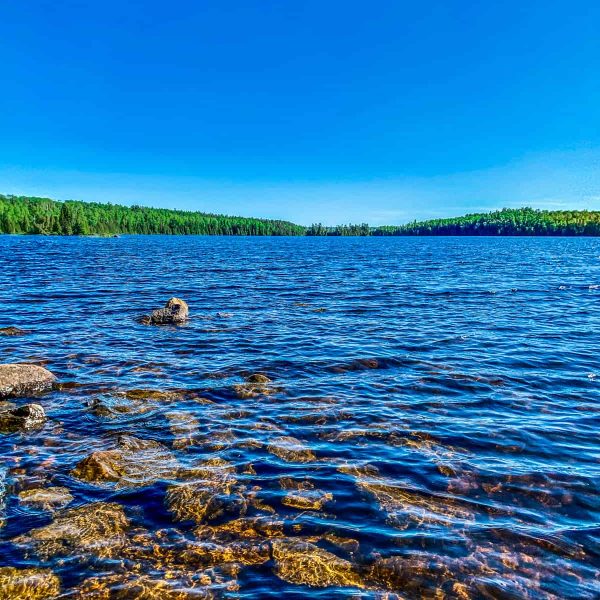
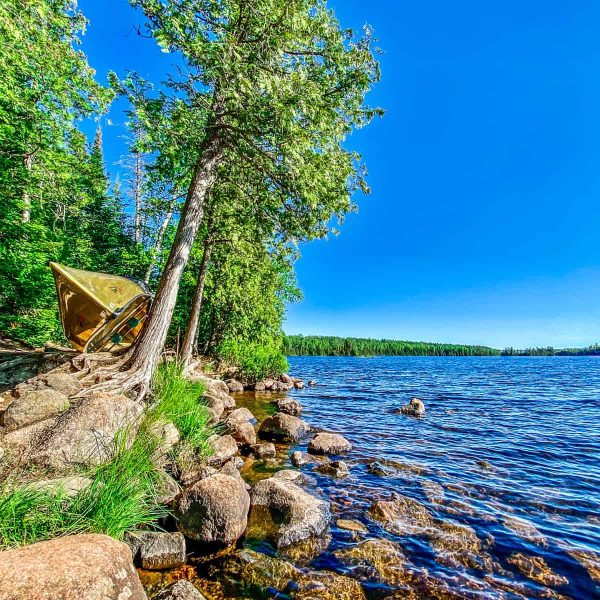

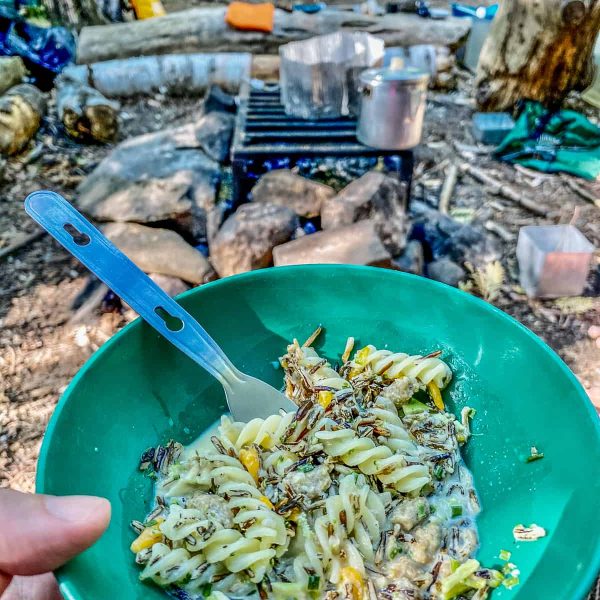
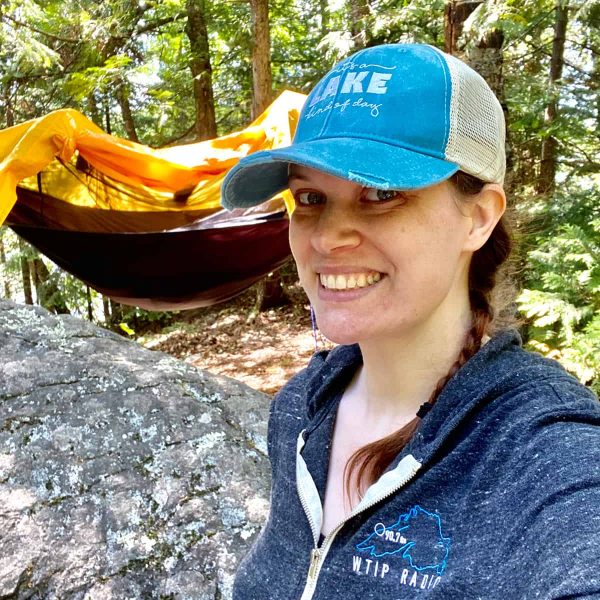
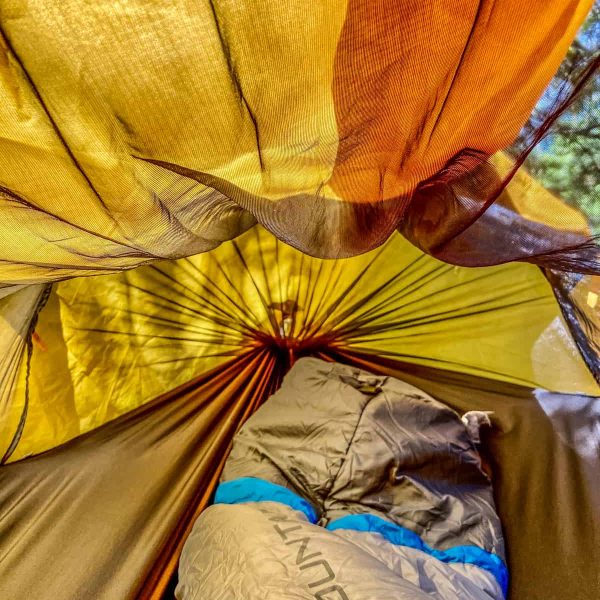
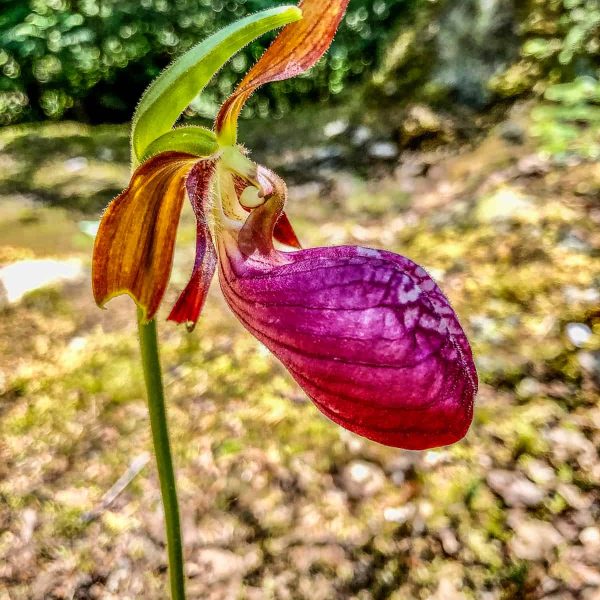
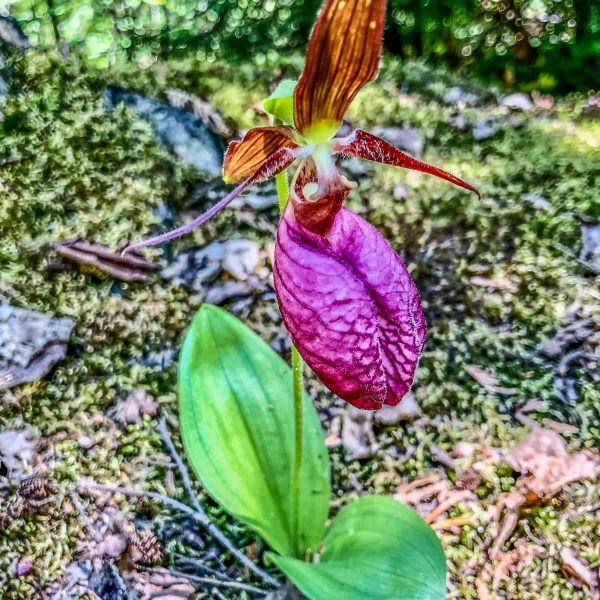
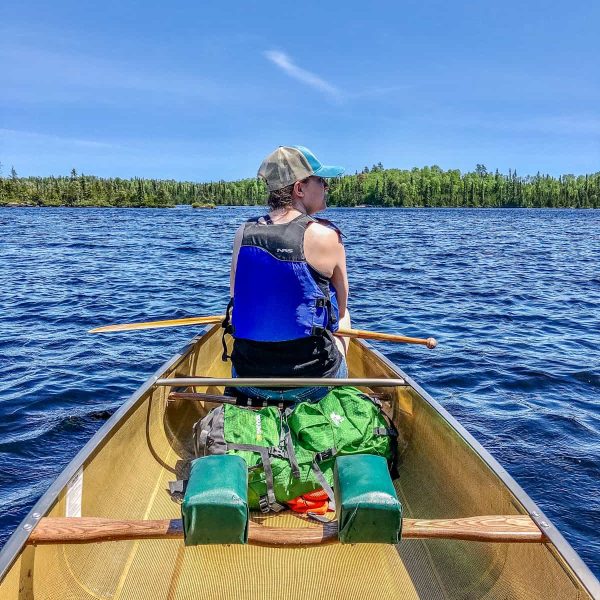
Pin It!
